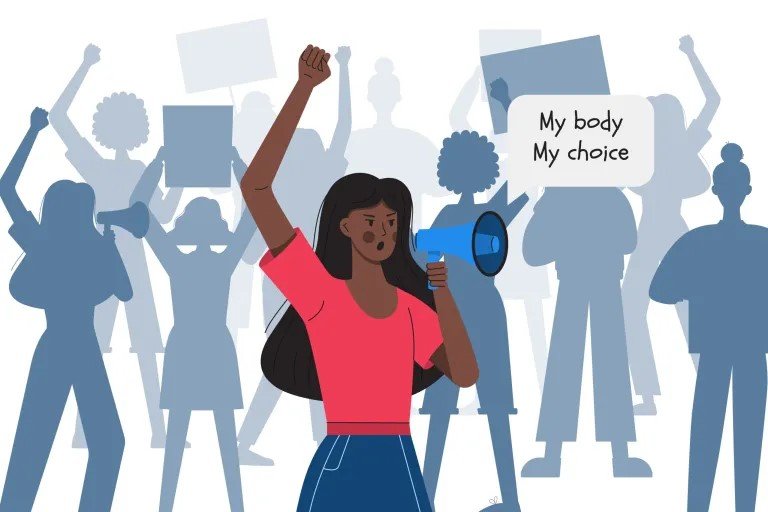Black Women’s Health on the Ballot: What You Need to Know
Credit: Valeriia Soloveva via Getty Images.
How do Black women feel about the upcoming election and what’s at stake for their health care access? The data paints a clear picture.
By Anissa Durham
Women, particularly Black women, will undoubtedly have the greatest impact on this year’s presidential election.
And as Election Day — Nov. 5 — quickly approaches, many Black women are calling for better access to health care and reproductive health care. But what’s at stake for their health overall?
Related: What 7 Young People Want Harris-Walz to Improve in Health Care
In a recent report by The Commonwealth Fund, some of the key concerns for women include abortion and reproductive services, existing health care disparities, and insurance coverage.
Why does this matter? Black women have some of the highest rates of preventable death due to maternal mortality, substance use, COVID-19, and treatable chronic conditions. This election may determine if more Black women will continue to die.
A separate report by the Intersections of Our Lives organization found women of color are particularly concerned about rising costs, affordable housing, maternal deaths, and abortion care.
“We know that Black women are one of the largest voting blocks in the American electorate,” Dr. Regina Davis Moss, president of In Our Own Voice: National Black Women’s Reproductive Justice Agenda, which coproduced the report, told Word In Black earlier this year. “We play a decisive role in this year’s election as we have in previous elections. It’s going to be very important that policymakers speak to our issues … and take us seriously.”
The Data Tells a Grim Story
Maternal Mortality: Women in southeastern states like Tennessee, Mississippi, and Louisiana have the highest maternal death rates. And nationally, Black, American Indian, and Alaska Native women have the highest maternal death rates.
The Commonwealth report found that inadequate access to health care services throughout a pregnancy, in addition to disparities in socioeconomic status, underlying health, and quality of care have all contributed to the maternal mortality rates in the U.S.
Currently, Black women are three times more likely to die from a pregnancy related cause than white women, according to the Centers for Disease Control and Prevention. And the maternal mortality rate nearly doubled between 2018 and 2022, with rates for Black and American Indian and Alaska Native women increasing the most.
The highest rates of maternal mortality are identified in the Mississippi Delta, which includes Arkansas, Louisiana, Mississippi, and Tennessee. A significant percentage of counties in these states don’t have a single hospital or birth center with obstetric providers. These states also rank low on postpartum depression screening, high uninsured rates prior to pregnancy, and high rates of low-risk cesarean births, the Commonwealth report states.
Cancer Deaths: Additionally, breast and cervical cancer deaths are highest in Southern states. Part of the reason some women don’t get recommended follow up tests for an abnormal cancer screening is the cost. Despite the Affordable Care Act requiring all private and public insurance plans to cover mammograms and cervical cancer screenings, insurance doesn’t apply to follow-up screenings like ultrasounds.
Uninsured Rates: In Texas, Georgia, and Oklahoma, women between 15 and 44 have the highest rates of being uninsured. As of 2022, women ages 15 to 44 have higher uninsured rates than women ages 45 to 64. Part of the problem and gaps in coverage is because of the lack of Medicaid expansion in 10 states.
Syphilis and Other STIs: Since 2019, syphilis infection among women has increased in nearly all states, with the highest rates in South Dakota, New Mexico, Mississippi, Arkansas, and Oklahoma. Rates are highest for American Indian and Alaska Native women, largely driven by increases in substance use, and limited access to care and health services for screening, diagnosis, and treatment.
Related: Syphilis Is on the Rise. Here’s What You Need to Know
A report published earlier this year by the CDC found half of the reported cases of chlamydia, gonorrhea, and syphilis were for youth aged 15-24. And 31% of all cases of these STIs were reported by Black or African American people.
How the 2024 election could affect women’s health care
Medicaid: A Trump administration could reduce federal spending for Medicaid, as outlined in the Project 2025 policy initiative and the Republican Study Committee’s Fiscal Year 2025 budget proposal, and adopt policies focused on identifying fraud, waste, and abuse. In contrast, a Harris administration would likely continue to use federal levers to expand or enhance Medicaid coverage, such as through new models of whole-person maternal health care and continuous eligibility for children beyond the 12-month coverage period.
Family Planning: More than 4,000 Title X clinics across the country provide low-income and/or uninsured patients with family planning services, prenatal care, cancer screenings and other preventive services, and linkages to primary care. Policies put in place during the first Trump presidency drove nearly one-third of family planning clinics to leave the public health safety net. The Biden–Harris administration reversed these policies and helped rebuild the network.
Abortion: After the U.S. Supreme Court’s Dobbs v. Jackson Women’s Health Organization decision overturned the constitutional right to an abortion under Roe v. Wade, the Biden–Harris administration affirmed that abortions may be appropriate for patients with emergency medical conditions under the Emergency Medical Treatment and Labor Act. In June, the Supreme Court decided to temporarily allow abortions in medical emergencies in Idaho. A second Trump administration could interpret EMTALA differently and reduce access to emergency abortion care, in at least some states.
What does this mean? Who’s in office next year will either help lower the rates of preventable death and disease among Black women and help increase access to health care or continue to contribute to their demise. The decisions voters make will ultimately determine health care access, reproductive rights, and more. What will you decide?

